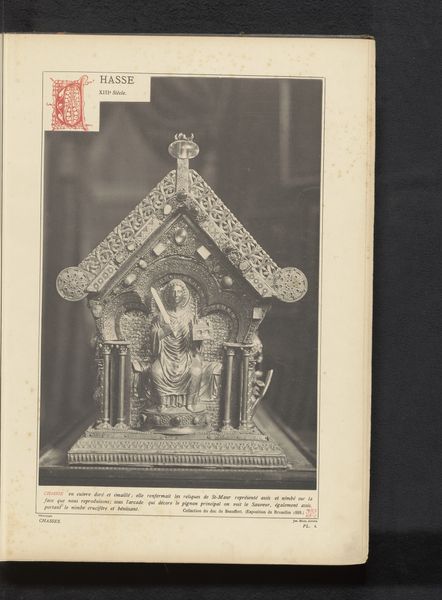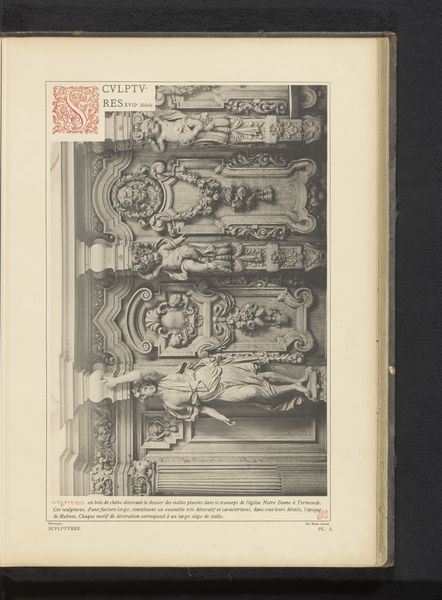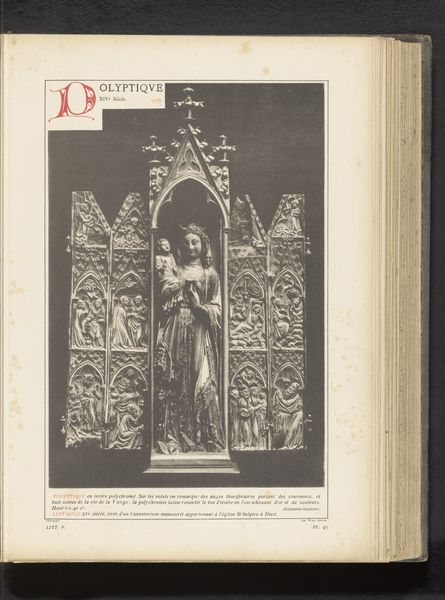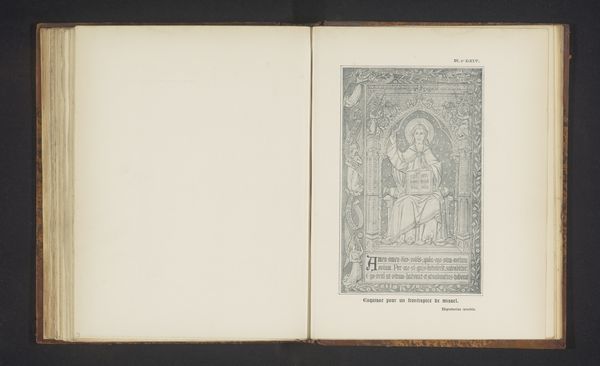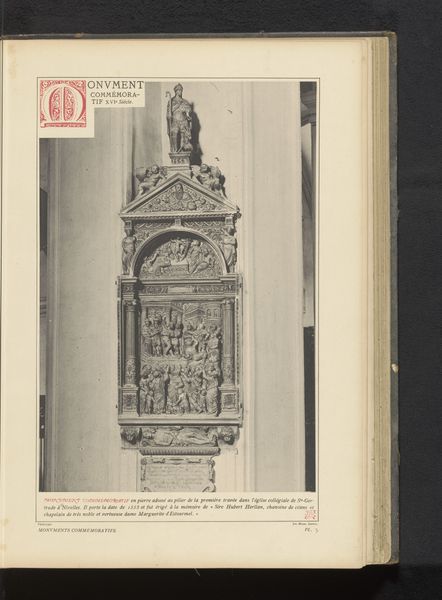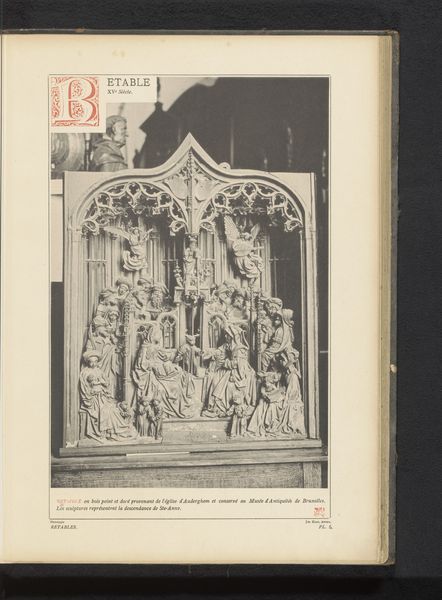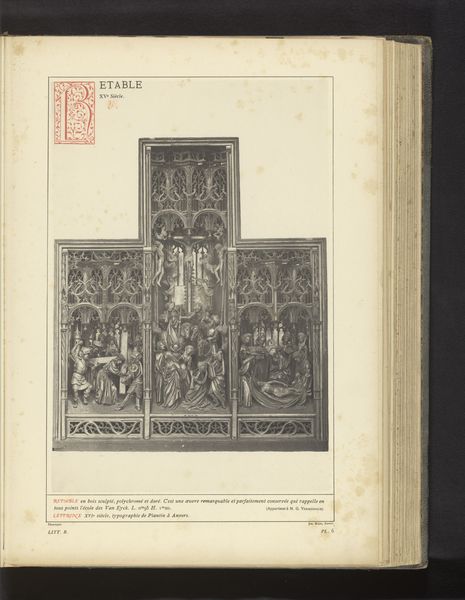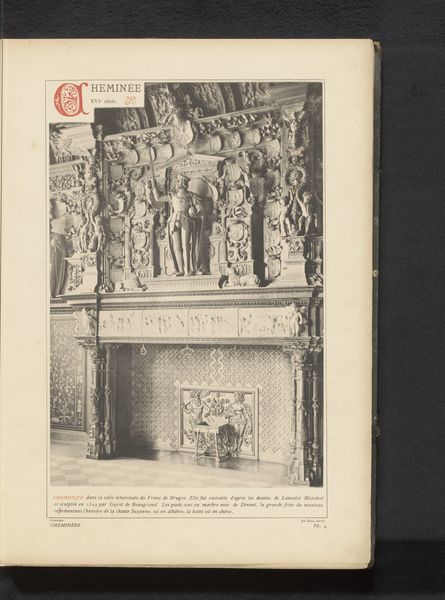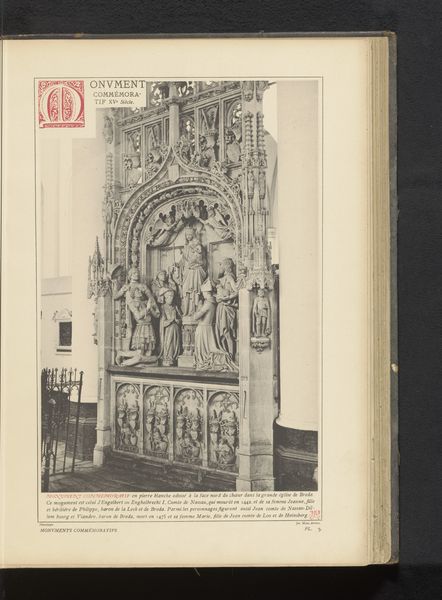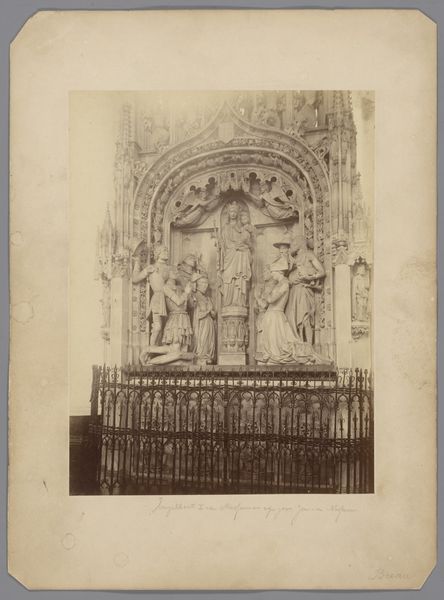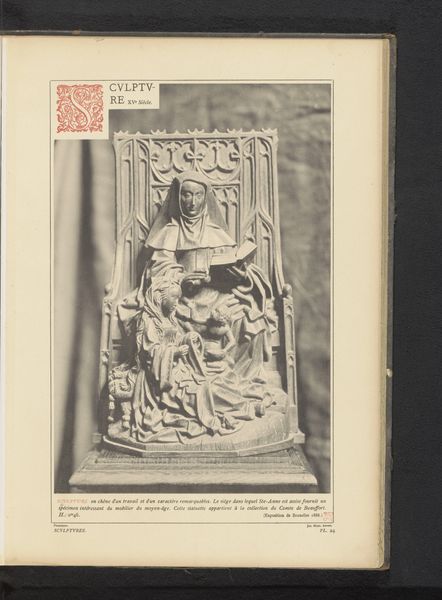
Relikwieënkast van de heilige Servaas in de Sint-Servaasbasiliek in Maastricht before 1887
0:00
0:00
print, metal, photography, sculpture
#
portrait
#
medieval
# print
#
metal
#
figuration
#
photography
#
sculpture
#
islamic-art
Dimensions: height 296 mm, width 185 mm
Copyright: Rijks Museum: Open Domain
This reliquary, made by an anonymous artist, likely in Maastricht, houses relics of Saint Servatius. It’s constructed from precious metals, likely gold and silver, and adorned with intricate detailing. The processes involved in creating such an object were highly specialized. Goldsmiths would have employed techniques like hammering, engraving, and soldering, requiring years of training and a deep understanding of the materials. The work's appearance is driven by the inherent qualities of the metals: their reflective surfaces, malleability, and capacity to be worked into complex forms. The weight of the materials is also significant, lending the reliquary a sense of importance and permanence. These skills represented a significant investment of time and knowledge, highlighting the cultural value placed on religious artifacts. The considerable labor involved in the production process underscores the importance of craft and making in understanding the social and cultural significance of this reliquary. It challenges any traditional distinction between fine art and craft.
Comments
No comments
Be the first to comment and join the conversation on the ultimate creative platform.

